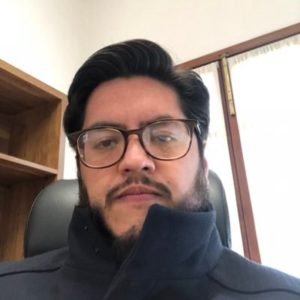If a UFO landed on Earth today, what would you show as proof of human’s remarkable intelligence and skill? For Arts Administration and Cultural Entrepreneurship part-time lecturer Enrique Márquez, the answer is simple, our art. The accomplished viola player and educator believes that mankind’s creative works are our greatest achievement. It is a stance that has driven his professional pursuits and makes Márquez an ideal fit to support CAMD’s Arts Administration and Cultural Entrepreneurship (AACE) master’s degree and certificate program.
The First Movement
Márquez began playing the viola at age 4. His natural ability and dedicated practice eventually earned him a seat as principal viola in both the Orchestra of the Americas and the Jeunesses Musicales World Orchestra. While performing in more than 25 countries, his onstage companions have included musical heavyweights Kurt Masur, Lorin Maazel, Gustavo Dudamel and Valery Gergiev.

From Artist to Arts Administrator
As a child from Xalapa, Mexico, music helped open the world to Márquez. So, it is not surprising that the talented musician would place a high value on creative endeavors. Since well-before his Carnegie Hall debut recital in 2005, art and access to it have been forefront in Márquez’s thoughts. In his multiple arts administrator roles, he has advanced culture’s impact on various communities. Márquez was the Founding Executive and Artistic Director of the Boca del Río Philharmonic Orchestra. During his tenure he launched the Orquestando Armonia, a three-hour daily orchestra and choir program for 500 low-income elementary and middle school students. From 2016 to 2018, he served as the youngest director of the Veracruz Cultural Institute in Mexico. The influential organization provides free courses in a range of artistic disciplines to youth throughout the region.
Márquez’s trajectory exemplifies the dynamic nature of arts administration and its typical arc. He transitioned from purely a creator to a professional who facilitates the artistic expression of others. As is often the case, his work led him down unexpected paths. While with the institute, Márquez joined an expert panel to help draft national policy. Together they guided the Mexican Congress as they wrote the General Law of Culture and Cultural Rights. The foundational legislation helped define the value of artistic works in the public sphere. Márquez has developed, found funding for, and implemented several artistic programs. He knows what elements are required to make art happen on a large scale.
The State of Culture and Technology
The Cultural Rights bill is an example of how governmental support—or lack thereof—impacts arts administrators’ daily work. Secure funding has a direct and positive impact on public access. With it, theater operators can afford to reduce ticket prices, and dance companies can offer low-cost classes. Without it, galleries and museums become exclusive to only those who can afford admission.
Private organizations often must figure out how to survive on their own. Reaching new audiences can lead to self-sufficiency. Podcasts, satellite radio, zoom concerts—they all address the intertwining needs of increased financial security and enhanced access. The Metropolitan Opera simulcasts live performances in exceptional quality to movie theaters in Japan, Brazil, and Spain. The global proliferation of smartphones means audiences in some of the most remote locations can access 15 world-class sonatas in seconds.
Technology for Cultural Organizations
It is a far cry from the experience Márquez had as a kid when his family would drive far outside town to the lone Tower Records. Once there, he would buy a single, expensive VHS tape and watch one orchestra perform the same pieces on repeat. In less than thirty years, technology has drastically evolved. What’s more, the pace of change is accelerating all the time. His course, Information Technology for Arts and Cultural Organizations, enables creative leaders to find, utilize and customize technology for their strategic goals. Throughout the class, case studies provide roadmaps for technology adoption. Students also learn technical terms, identify potential challenges, and compare solutions.
Accelerando and Crescendo
Equipping his fellow Art Administrators with technological language and tools is imperative for Márquez. Doing so helps cultural organizations of all sizes remain competitive and keeps the arts accessible to the public. Also, as Netflix would likely attest, the need for more content is relentless. Robust access leads to fresh perspectives on existing genres and inspires new stories. Getting artistic disciplines of all forms to the community is not simply an act of charity: It is vital for the continued expansion of the arts.
To learn more about the Art Administrative Creative Entrepreneurship programs visit our Graduate Overview.
In addition to teaching for Northeastern, Márquez sits on the Global Leaders Program Advisory Council and Sphinx LEAD fellow. Currently, he keeps his musical talents sharp performing with the Dudley Orchestra at Harvard. You can catch Márquez playing alongside members of the New York Philharmonic and the Metropolitan Opera during Music for Life International’s yearly benefit performance at Carnegie Hall.


